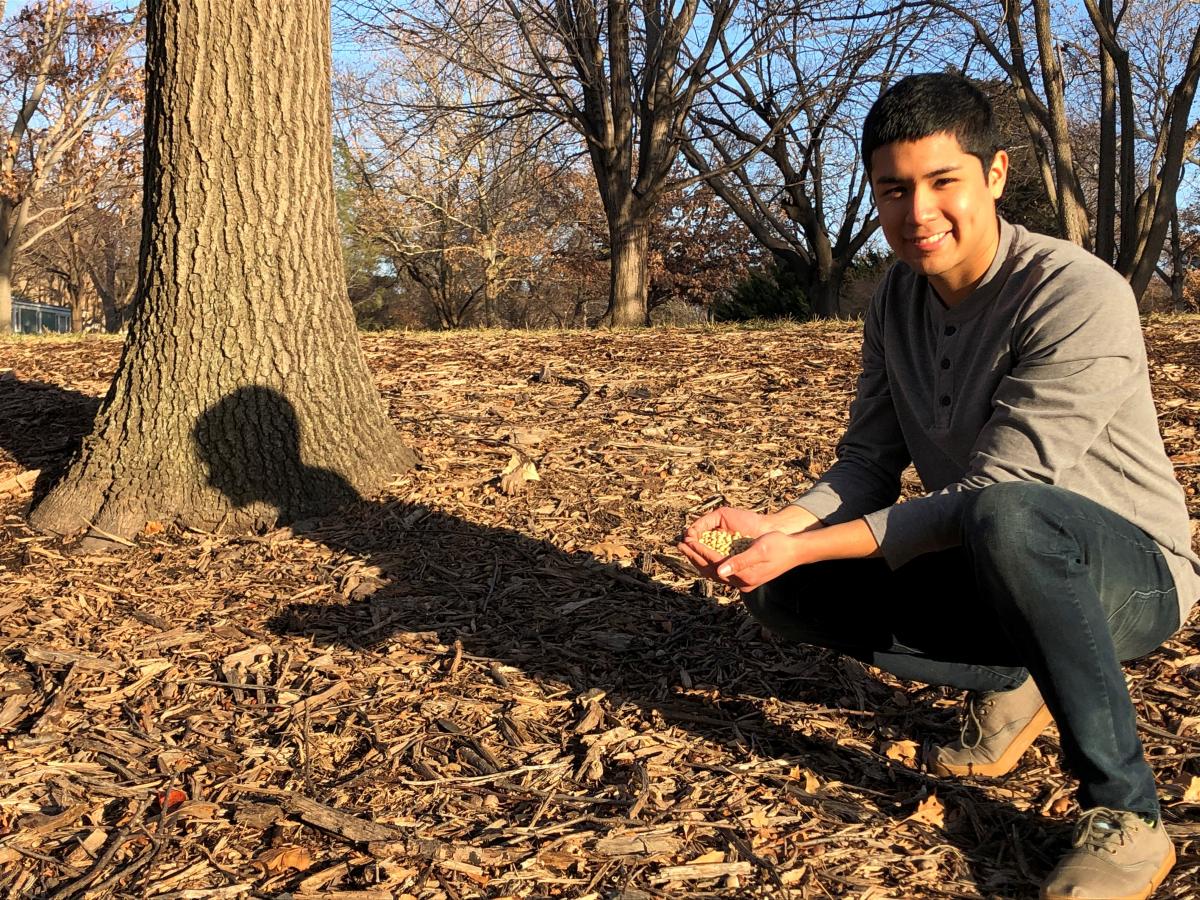
While the pandemic closed some doors, NRT master’s student Alexis Chavez found it opened others, like an international collaboration he established during his first semester at Nebraska and a consequent presentation to the American Meteorological Society.
Chavez worked with three graduate students in Brazil entirely online from August to December 2020 to research the effect of climate on soybean production. The four presented their findings at the AMS annual meeting on January 11, 2021.
“The AMS organization is a pretty prestigious organization for the climate and meteorological field,” Chavez said. “My advisor, Dr. Mike Hayes, said it is definitely a good view, my being a master’s student and already getting that experience of working internationally and being able to present in a prestigious meeting.”
The three students working and presenting with him, José Igor Castro, Greici Parisoto and Ana Carolina Murad Lima, are doctoral students at Universidade de São Paulo. Chavez met them in a new minicourse, “Decision-Making and Attribution Science of Socio(agro)ecological Systems,” taught by Francisco Munoz-Arriola, associate professor of hydroinformatics and integrated hydroclimate at Nebraska, and Thiago Romanelli, professor of biosystems engineering at the university in Brazil, from August 3-7, 2020. The course was a first effort at Nebraska to collaborate with a university in a different country on attribution science, the study of the link between extreme weather events and climate change.
“In the final project, we had to choose a topic related to the class and do a presentation as if for a proposal or paper for publication,” Chavez said. “The other three students and I thought that soybean production is pretty important in Brazil and the United States, so we chose it.”
After his team presented in class, Munoz-Arriola and Romanelli recommended the students submit an abstract to AMS to present at its annual meeting in January 2021. With the meeting set for online because of the pandemic and no longer requiring travel, the students found they could afford it, submitted an abstract, and received acceptance November 12 to present.
In the months following the minicourse, they met online every few weeks to further research soybean production systems in Brazil and the United States and the countries’ climates.
“One way we tried to differentiate Brazil and United States soybean production systems was to do a case study of a state from each country, so we chose Illinois in the United States and a state called Mato Grosso in Brazil,” Chavez said. “We chose those two states because they are the two states with the highest amount of soybeans produced annually. We also looked at their climates and found they were substantially different. That was a good thing because it allowed us to see if this climatic difference had an effect on the soybean production.”
They looked at the climatic variables of average precipitation and average, minimum and maximum temperature. They also included land use as a variable.

“The point of the analysis was to examine which factors were possibly affecting soybean yield trends in the United States, Illinois, Brazil and Mato Grosso,” Chavez said. “The results were that no variable indicated a strong relationship between them and the soybean yield trends of each of the countries and states.”
Even though the data showed a rise in temperatures, soybean production in both countries rose exponentially over the past 10 to 20 years, he said.
“The conclusion we came up with is that the soybean production is affected not only by climatic factors but also by several other factors, including the advances of agricultural technology and certain policies that each country has had in increasing soybean production and making it more efficient,” Chavez said.
Attendees at the AMS presentation who spoke with him and the other students after it received their research study well.
“The people we spoke with were interested in it because of the potential for it to be developed further,” Chavez said.
He said he was grateful to meet the students from Brazil and have the chance to collaborate with them.
“I recognize that if the COVID pandemic wasn’t happening, most likely the AMS meeting would have been in person and we probably would have never pursued that collaboration,” he said.
And the collaboration may not be over yet.
“We get along pretty well,” Chavez said of his teammates. “They jokingly said to me, ‘After this pandemic is over and we all have our vaccines, you will have to come to Brazil.’ Oh. ‘OK, let’s not get ahead of ourselves,’ but yes, we definitely said that we could—even if it’s just being friends—continue this project. We have that working relationship now.”
— Ronica Stromberg, NRT Program Coordinator


